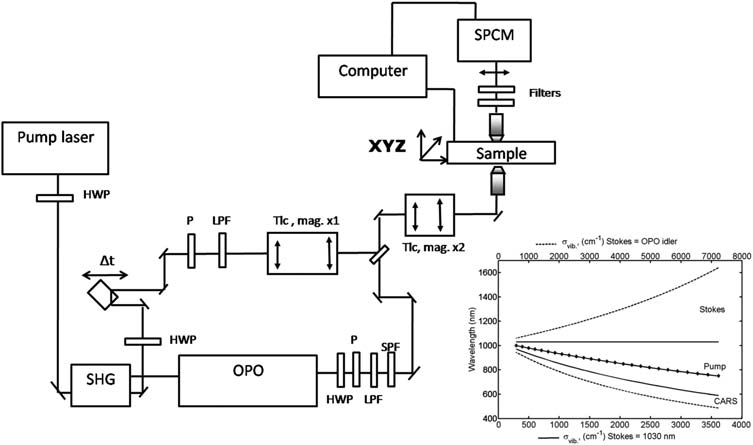
Application of a high power Yb fiber-based laser compatible with commercial optical parametric oscillator for coherent anti-stokes raman scattering microscopy
C.A. Hage, S. Boisset, A. Ibrahim, F. Morin, C. Hoenninger, T. Grunske, S. Souissi, L. Heliot and A. Leray
Microscopy research and techniques 77, 422-430 (2014) [Accès à la revue]
Cet article présente l'utilisation d'un laser picoseconde fibré pour la réalisation d'un microscope CARS (Coherent anti-Stokes Raman Scattering) qui permet l'observation de molécules sans marquage.
Abstract: Coherent anti-Stokes Raman scattering (CARS) microscopy is a powerful tool for chemical analysis at a subcellular level, frequently used for imaging lipid dynamics in living cells. We report a high-power picosecond fiber-based laser and its application for optical parametric oscillator (OPO) pumping and CARS microscopy. This fiber-based laser has been carefully characterized. It produces 5 ps pulses with 0.8 nm spectral width at a 1,030 nm wavelength with more than 10 W of average power at 80 MHz repetition rate; these spectral and temporal properties can be slightly modified. We then study the influence of these modifications on the spectral and temporal properties of the OPO. We find that the OPO system generates a weakly spectrally chirped signal beam constituted of 3 ps pulses with 0.4 nm spectral width tunable from 790 to 930 nm optimal for CARS imaging. The frequency doubling unconverted part is composed of 7–8 ps pulses with 0.75 nm spectral width compatible with CARS imaging. We also study the influence of the fiber laser properties on the CARS signal generated by distilled water. In agreement with theory, we find that shorter temporal pulses allow higher peak powers and thus higher CARS signal, if the spectral widths are less than 10 cm−1. We demonstrate that this source is suitable for performing CARS imaging of living cells during several hours without photodamages. We finally demonstrate CARS imaging on more complex aquatic organisms called copepods (micro-crustaceans), on which we distinguish morphological details and lipid reserves.
Thème : Biophotonique
